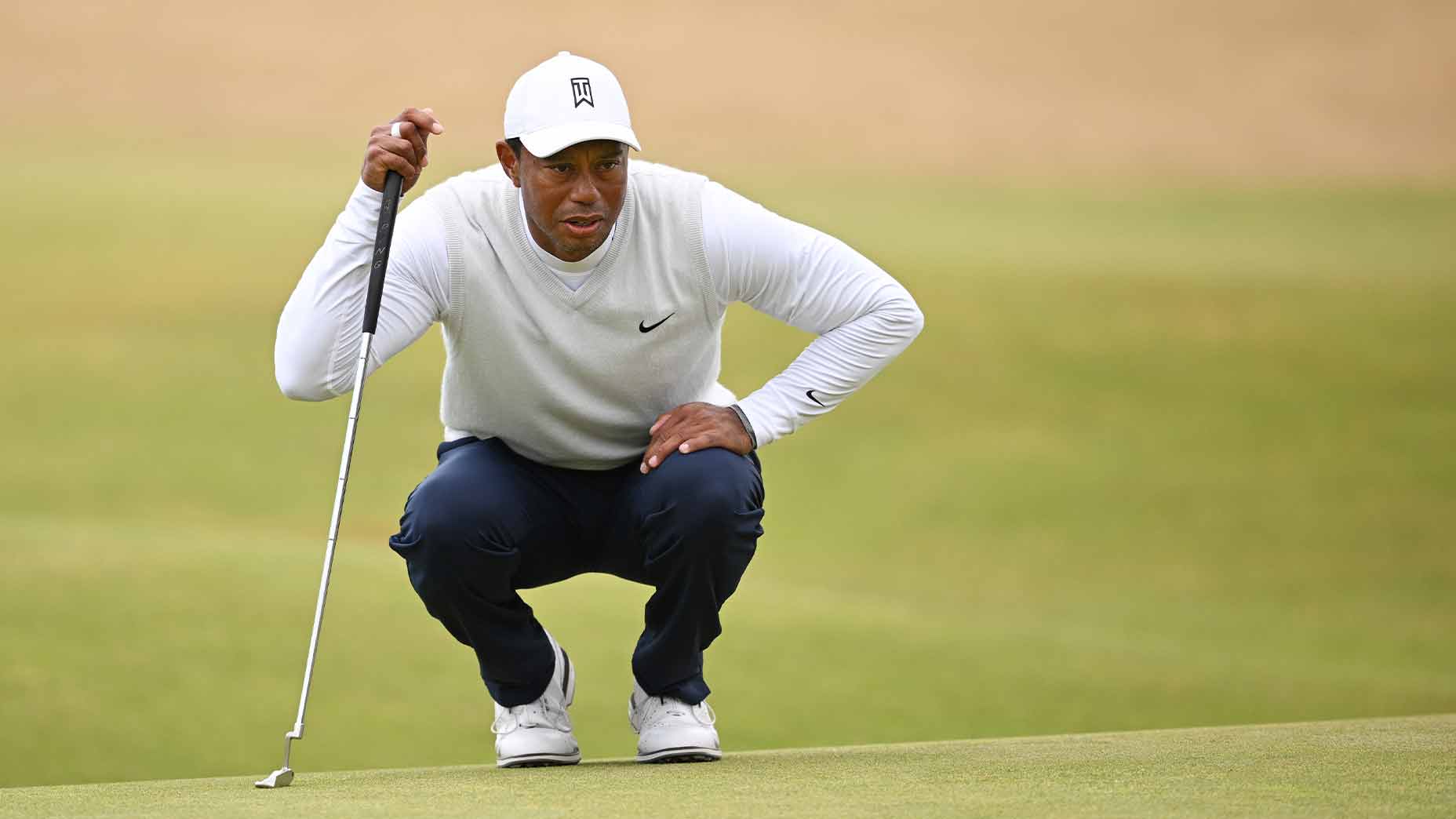Evidently, Tiger Woods can even hold the golf world’s attention between his toes.
On Monday, the 15-time major champion announced his withdrawal from the Hero World Challenge due to a bout of plantar fasciitis. Woods, who has not competed professionally since the Open Championship in July, said in a statement he was disappointed to miss the Hero — an event he hosts annually — but does not expect the injury will preclude him from his next scheduled appearance in The Match on Dec. 10.
“In preparation and practice for this week’s Hero World Challenge, I’ve developed plantar fasciitis in my right foot, which is making it difficult to walk,” Woods said in a statement released to his Twitter account Monday afternoon. “After consulting with my doctors and trainers, I have decided to withdraw this week and focus on my hosting duties. My plan is still to compete in The Match and PNC Championship.”
The WD marks Woods’ first injury-driven withdrawal since the U.S. Open in June, and extends his absence from the sport into at least the middle of December. Among the Hero, The Match and the PNC Championship, the 46-year-old was originally expected to have three appearances in as many weeks in December.
Then along came plantar fasciitis. What is the condition exactly?
“Fascia is a thick cartilaginous fiber that basically surrounds muscles and plantar fascia, specifically, is at the bottom of your foot, so it attaches at your heel bone and then stretches out towards your toes,” said Dr. Katie Colgan, a New York-based physical therapist who specializes in sports injuries. (Disclaimer: Katie also happens to be my older sister.) “Plantar fasciitis is irritation of that plantar fascia that’s on the bottom of your foot.”
The injury, per Woods’ release, is to his right leg, the same one that suffered substantial trauma in his February 2021 car accident. In Colgan’s view, the after-effects of that injury could be at least partially to blame for the development of this one.
“Often, plantar fasciitis is related to stiffness in the joints in the foot and ankle or weakness of muscles in the hip, foot and ankle,” Colgan said. “That stiffness or weakness leads to biomechanical forces being improperly translated from the foot up the body, so there’s more load on the plantar fascia.”
Plantar fasciitis, Colgan said, is painful but doesn’t typically come with the risk of further injury. With the proper treatment, Woods should be pain-free in around six weeks, and depending upon his pain level, he may be able to compete in less time than that. The treatment — icing is a common elixir — Woods receives over the next week and a half should help reduce his pain for his two other December starts.
“The injury can vary based on how acute it is,” Colgan said. “Often, pain will be worse in the morning — like when you’re taking your first steps — and weight-bearing or walking is painful. The good news is, it’s usually self-limiting, so he can play as his pain allows.”
